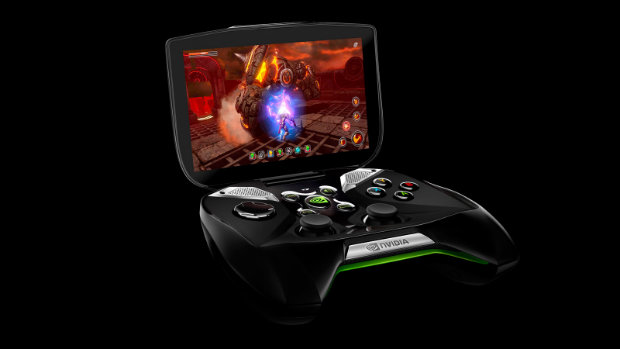A vision five years in the making
When NVIDIA CEO Jen-Hsun Huang surprised everyone at this year’s CES by unveiling the company’s Project SHIELD handheld, he had only held it for the first time ten days prior. In under a year, Project SHIELD transitioned from a five-year dream concocted by Huang, senior vice president of content Tony Tamasi, and a handful of other enthused gamers across the many sections of NVIDIA to a reality, the company details on its blog.
The first effort in creating SHIELD was creating a great controller, or as NVIDIA coins it, gaming’s most essential component.
“We wrote all the core software to hook Android games to controllers,” Tamasi said. “Then we thought, ‘Why don’t we just build a device with a great controller built in?'” From here, the first prototype was assembled in early 2012, though it was “little more than a game controller fastened to a smartphone with wood.” NVIDIA’s industrial and software designers took things from there and shaped Project SHIELD into what we know it as today: A handheld device shaped around the company’s latest Tegra 4 processor that is Android-ready and capable of streaming PC games.
And, “yes, it can play Crysis.”
Because SHIELD is able to stream games from PCs running NVIDIA GeForce GTX 650 GPUs or better, marketing VP Ujesh Desai is happy that, when the question is raised as to whether or not it can play Crysis, the answer will be, “yes it does.”
Time was not on the engineers’ side, though, as in September Huang decided he wanted to debut the project alongside the company’s next-generation mobile processor, Tegra 4, at the upcoming CES in January.
Respected senior engineer Andrew Bell assembled a team that worked on Project SHIELD throughout the fall, and in December, even flew in engineers from Texas and China from time to time to help out. The first two prototypes that featured every element of the device were delivered to Huang on December 18, though it contained both painful and comedic flaws. Nonetheless, with CES just 19 days away, a “doable, but tough deadline” lay ahead of the team as full production was getting ready to take place in stages.
“We need to make this perfect,” Huang said.
The first units that were displayed at CES were created over the holiday break, as engineers meticulously snapped and soldered pieces together while feeding off KFC. After one night’s KFC run, NVIDIA’s Aaron Gilroy toyed around with one of the devices, grinned, and asked, “Anyone else want to play some games?”
We had some hands-on time with NVIDIA’s ambitious project at CES, and we must say, it impressed us.
How Project SHIELD Got Build [NVIDIA]


